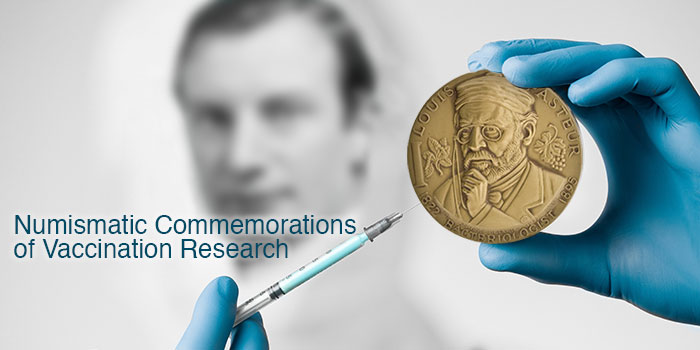
By Elena Stolyarik for American Numismatic Society (ANS) ……
The year 2020, which brought to the world a coronavirus pandemic, is coming to an end. Humanity looks forward with hope to successful innovations against the new deadly virus. This is an appropriate time to pay tribute to the achievements of scientists of previous generations.
On the topic of vaccination, the name of the English doctor Edward Jenner (1749–1823), the outstanding physician and pioneer of smallpox vaccination, is foremost.
For centuries, smallpox swept through communities, often killing nearly a quarter of its victims and leaving many survivors deeply scarred or even blind. In 1796, Edward Jenner demonstrated that infection with the relatively mild cowpox virus conferred immunity against the deadly smallpox virus. Jenner even created the word “vaccination”, derived from the Latin word vacca, meaning “cow”. Jenner’s vaccine was one of the great triumphs of medicine, which first brought smallpox under medical control and opened the way for the eventual elimination of this disease. The results from Jenner’s vaccination experiments were widely circulated after their publication in 1798, and vaccination was promoted as a public health tool throughout Europe.
A number of medals by the German medalist Friedrich Wilhelm Loos (1767—1816/19) are dedicated to Jenner’s discovery of the smallpox vaccination. They not only pay tribute to Jenner’s work but also served as rewards for parents who had their children vaccinated. They were intended to indicate the importance of the vaccination programs (figs. 1–3):
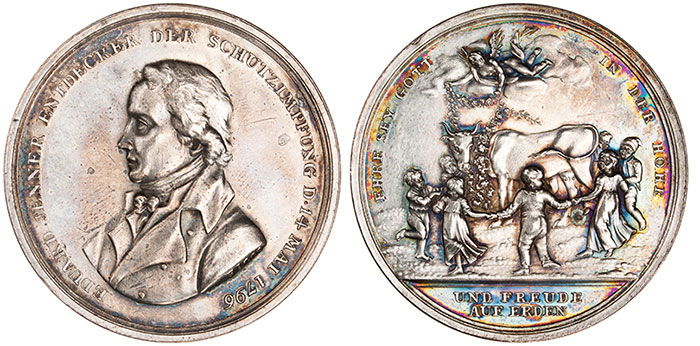
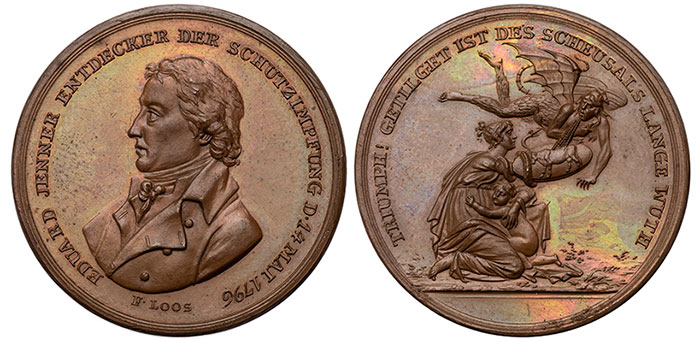
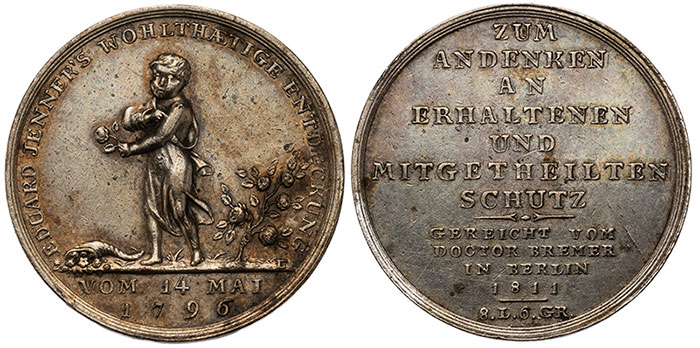
Some of the medals, like a silver medal from the time of Napoleon, depicting a cow and some medical instruments, were presented to doctors in recognition of the vaccinations they had given. This medal, designed by the French artist and engraver Alexis Joseph Depaulis (1790–1867), reflected the importance of the doctors who were attached to vaccination programs (fig. 4).
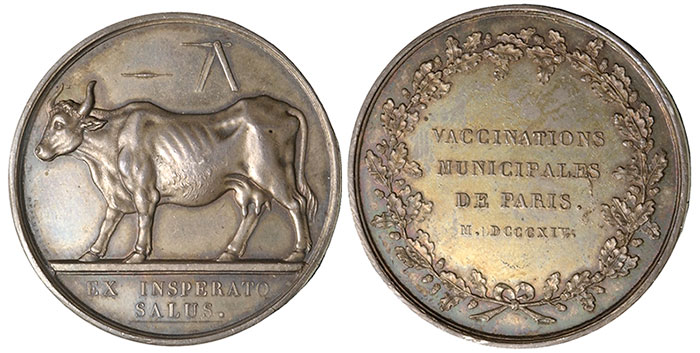
For the centennial of Jenner’s vaccination experiment on May 14, 1796, the Medical Society of the County of Kings (Brooklyn) issued a commemorative medal in 1896 (fig. 5).
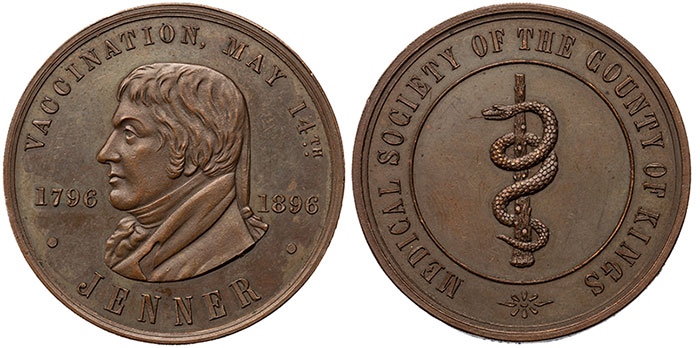
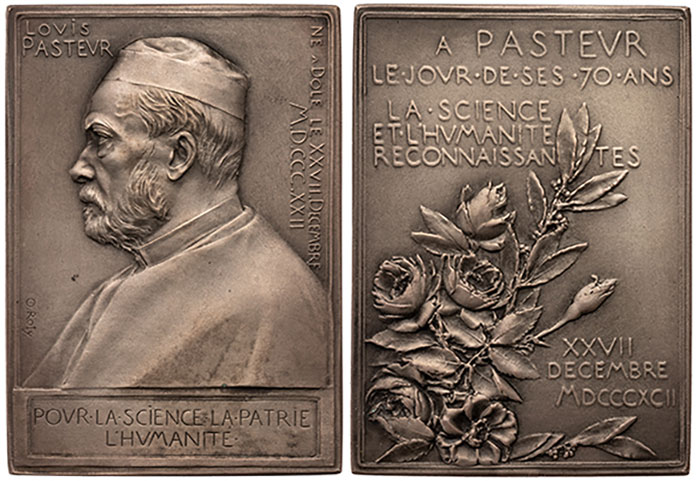
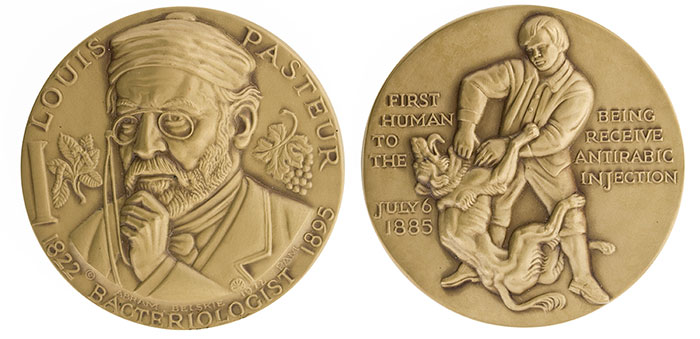
Another dangerous human disease, tuberculosis, also demanded attention.
In the 19th century, it became increasingly serious, causing up to one-quarter of deaths among Europe’s adult population. In 1882, the German microbiologist Robert Koch (1843–1910) isolated the bacterium that causes tuberculosis and created a substance useful for diagnosing the infection. Koch investigated the effect of an injection derived from dead bacilli had as a treatment for tuberculosis. This treatment failed, but it later turned out to be a useful diagnostic tool for identifying tuberculosis infection.
Koch’s research also opened the way for Albert Calmette and Camille Guérin to develop a successful tuberculosis vaccine in 1906. For his fundamental work, Robert Koch won the Nobel Prize in Medicine in 1905 (fig. 8).
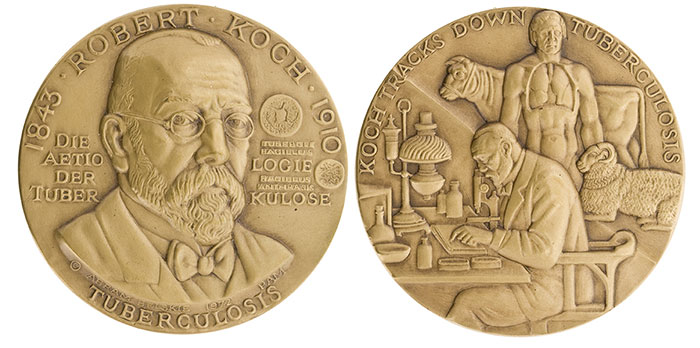
In 1883 Koch also isolated Vibrio cholerae, the cause of cholera. A series of cholera pandemics killed many millions of people in the 19th century, and scientific research on an anticholera vaccine become a vital necessity. The battle against cholera was won by a talented young microbiologist, Waldemar Haffkine (fig. 9).
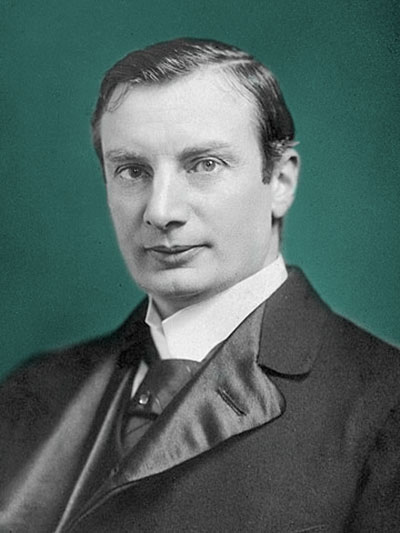
Born in the Russian Empire (in what is today Ukraine) in 1860, Haffkine was admitted in 1879 to Odessa (Novorossiya) University, where he studied and worked under the supervision of the world-famous biologist Ilya Mechnikov (1845–1916). Later, in 1908, Mechnikov was awarded the Nobel Prize in Medicine (along with the German physician and scientist Paul Ehrlich) in recognition of his pioneering research on immunology (fig. 10).
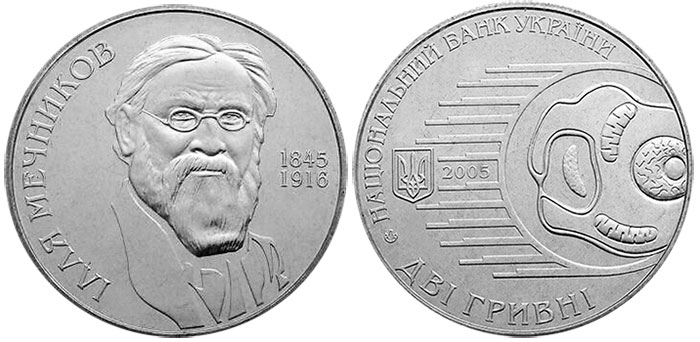
In 1888, Waldemar Haffkine emigrated to Geneva, and a year later he joined Mechnikov at the Pasteur Institute, the most innovative research center for infectious diseases at that time. From the beginning of his research career, Haffkine concentrated on the development of a cholera vaccine, and on July 18, 1892, he performed the first test on himself.
In 1893 he moved to India, where his vaccine became widely used and undoubtedly saved thousands of lives. In October 1896, another terrible epidemic struck Mumbai, this time of bubonic plague. Haffkine accepted the challenge and, after three months of intense work, successfully developed a plague vaccine. On January 10, 1897, he vaccinated himself to test the safety of his vaccine. For his outstanding achievements, Haffkine was appointed Companion of the Indian Empire by Queen Victoria in 1897. Two years later he was granted British citizenship.
Unfortunately, epidemics cannot be avoided and new diseases attack the world from time to time. However, the memory of the pioneers of science who have helped shape human lives for the better inspires our belief in the successful discovery of new treatments and vaccines.
Originally Published on the ANS Pocket Change Blog




